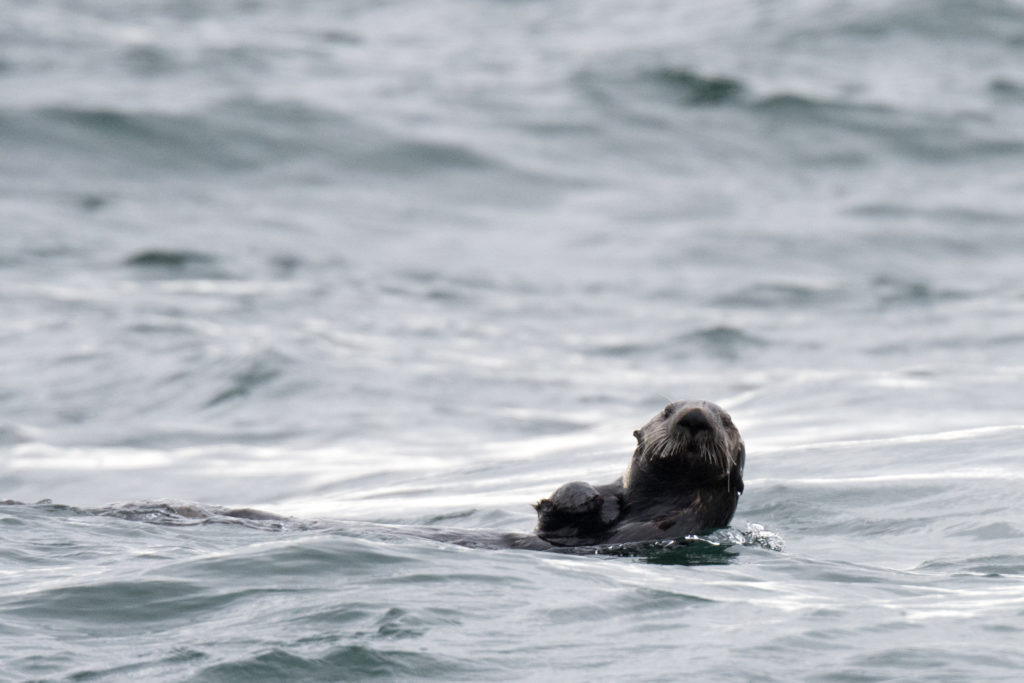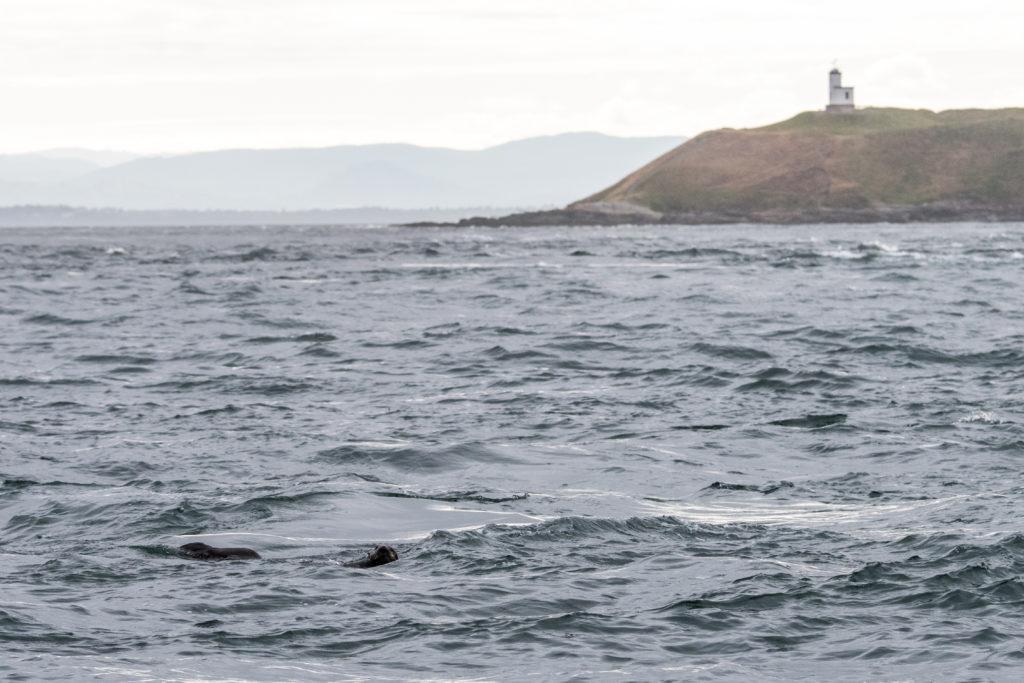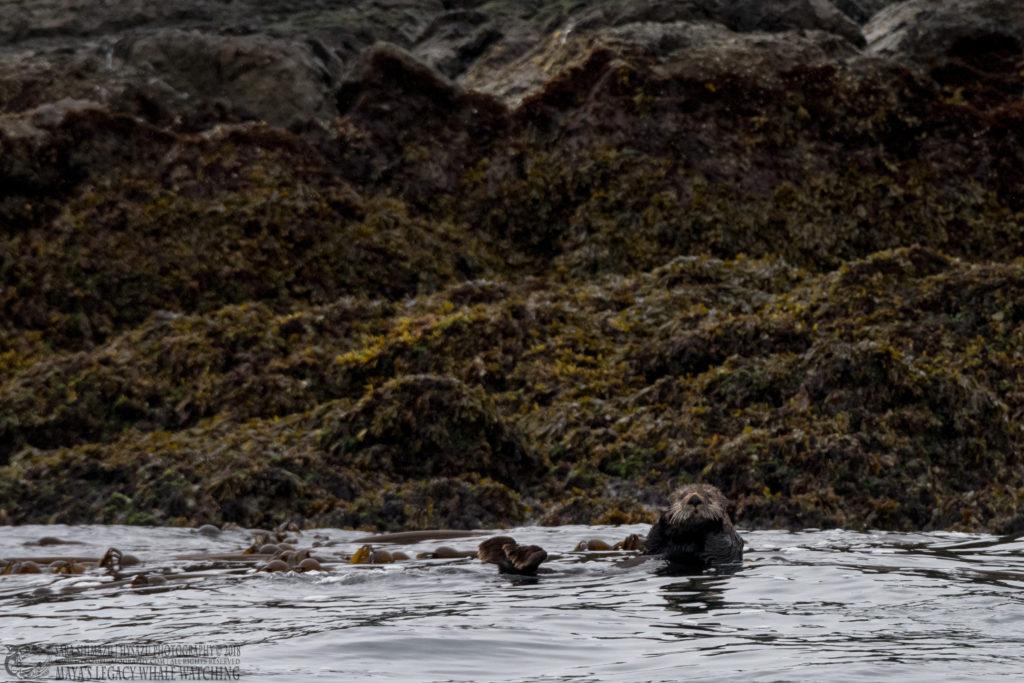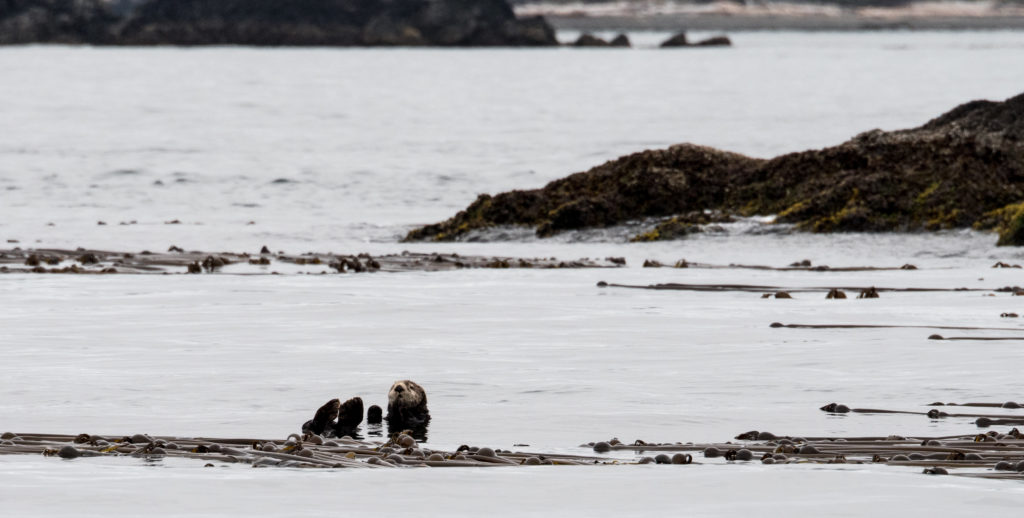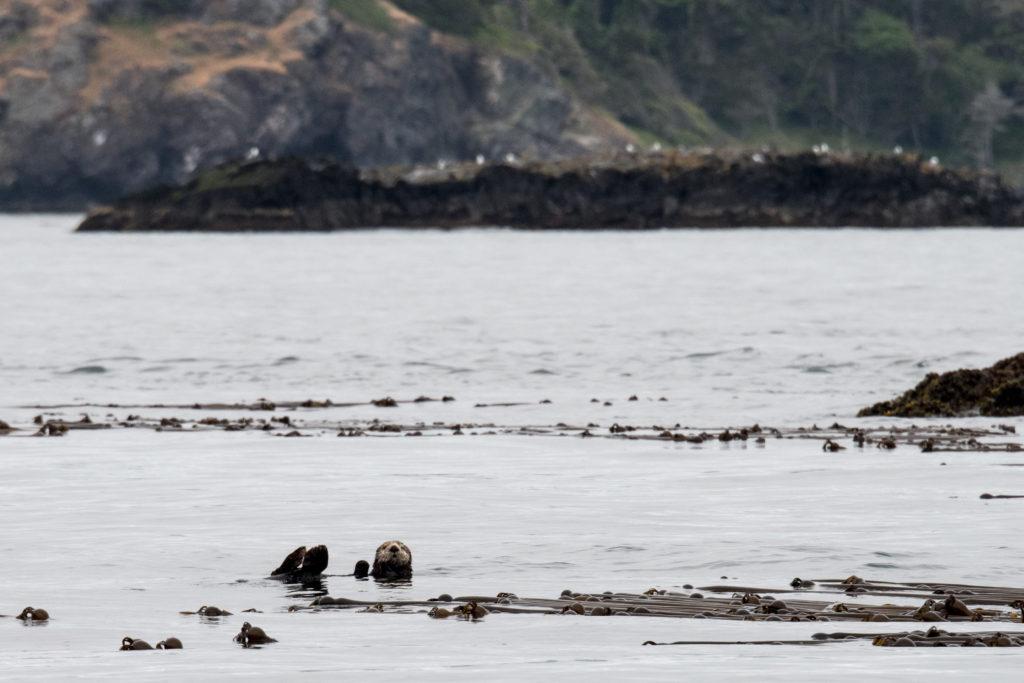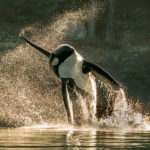Meet Odin!
On several of our recent whale watching and wildlife tours, including our latest all-day tour, our passengers and crew have been lucky enough to see a new visitor (and hopefully permanent resident) to the San Juan Islands---a one-eyed sea otter dubbed Odin.
Historically, sea otters were present in great numbers up and down the west coast from the Aleutian Islands to the Baja Peninsula. When traders discovered their luxurious pelts, with more than one million hairs per square inch, the species was hunted relentlessly until fewer than a couple thousand remained in just a handful of colonies. Formal protection came in the form of the International Fur Seal Treaty in 1911, which ended commercial harvest of sea otters. Since then their populations have rebounded and they have re-colonized much of their former range in Alaska and near Monterey Bay, California. Cooperative efforts between Alaska, British Columbia, Washington and Oregon have been successful in reintroducing them in other places along the coast and have led to small but growing populations; a trend we hope continues!
After being completely extirpated from the Salish Sea in the 18th and 19th centuries it is truly amazing to see Odin here and we hope he is just the first of many otters to come. Sea otters, which feed on urchins, crabs, clams and more, are intimately connected to the health of the ecosystem and in particular the kelp forests, which provide critical habitat for forage fish and young salmon to grow and feed. The otters eat approximately 25% of their body weight daily (that's up to 25 lbs per day for an adult male!). They can dive up to 330 feet in their search for food and can hold their breath up to five minutes though most dives are only around a minute long.
Hopefully we'll continue to see Odin and more of his kin in the years to come as we work to protect and restore the Salish Sea ecosystem.



